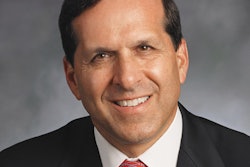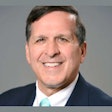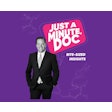
There are many areas of practice performance that simply go unnoticed by most practices. One of these areas is overdue patients.
After years of analyzing thousands of dental practices and providing consulting solutions, we found most practices don't measure overdue patients in the most advantageous manner. However, this barometer is critical. Its effect on practice production can represent tens of thousands of dollars per year or more.
Understanding the overdue patient
 Dr. Roger P. Levin.
Dr. Roger P. Levin.The most useful definition in terms of maximizing practice production and performance of an overdue patient today is any patient without his or her next appointment. It doesn't matter if the patient failed to schedule before leaving the practice, canceled the appointment without rescheduling, or even became a no-show.
Overdue patients shouldn't be defined based on the reason they're overdue (or based on your emotions about them, such as being annoyed at a no-show.) An overdue patient is simply a patient without an appointment. Simple definition? Yes. But most practices seem to lack an effective approach to addressing this issue.
The missing factor for most practices is not having a continual and consistent overdue patient follow-up program. We refer to this as patient reactivation.
In the past, patient reactivation meant contacting and scheduling any patient that had not been in the practice within the last 18 months. That definition became obsolete during the COVID-19 pandemic when practices were uncertain about what was going to happen to their production, revenue, and profit. Levin Group changed the definition for patient reactivation to include any patients who weren't scheduled for their next appointment.
Consider the following steps for successful patient reactivation.
Step 1: Have a defined follow-up program for any patient who isn't currently scheduled
This program should begin with a telephone contact to determine if the patient has any specific concerns that need to be addressed. Currently, the two most prominent concerns are safety and financial capability. Practices should have well prepared, positive scripting regarding safety and equally positive scripting regarding financial options, especially interest-free financing.
Step 2: Have a multiple contact program
You can't give up after one unsuccessful attempt to reach a patient. People today are extremely busy trying to navigate their everyday lives. In addition to safety and financial capability, time has become a more important factor for many patients who aren't currently scheduled. If the practice doesn't reach out to patients to help them schedule, many patients will simply forget about their dental appointments. We have all had the experience of finding out we were well overdue for some type of appointment and didn't even realize it.
Step 3: Identify the contact methodologies
We suggest a process of three phone calls with excellent scripting as the primary contact. If you don't make contact, the calls should be followed by three text messages and then three emails if there is no response to your texts. This is how a system is built and a reactivation system needs to be put in place or practices will lose patients and may not be able to replace the same revenue from other patients. This is where practices gradually begin to slow down and fall off overtime and don't even realize why.
Step 4: Track the numbers for active patients, active patients scheduled, and active patients to be reactivated
Build this on a simple spreadsheet so that the practice can track performance. If the number of active patients is declining or the number of patients who need to be reactivated is rising, the practice must radically improve the reactivation process.
Critical nature of reactivation
Do not underestimate the critical nature of follow-up and reactivating patients. We meet many practices that are looking for ways to increase practice production and overlook some of the most obvious strategies.
If you're not looking at total active patients and total number of patients to be reactivated on a weekly basis, it's very likely that your reactivation and follow-up systems are weak or nonexistent. The truth is that most practices only follow up to reactivate patients when the practice gets slow or the front desk team members have excess time (which is generally rare).
That is why this process and system needs to be built and worked daily. Retaining patients may be one of the most productive ways to improve practice performance and increase practice production and profitability.
The value of reactivating overdue patients
Ultimately, the value of reactivating overdue patients is significant. Unfortunately, it's regularly overlooked and can represent anywhere from tens of thousands to hundreds of thousands of dollars per year.
For example, if a practice lost $50,000 in revenue a year for 20 years that totals $1 million. Reactivation may be one of the larger opportunities to increase practice production at a time when dental practices are experiencing more competition, more challenges, and lower insurance reimbursement. As dentistry continues to evolve it will become increasingly important to access all the opportunities available to practices.
We often refer to reactivation of patients as one of the "invisible" areas for increasing practice production. We call it invisible because it is either not measured or difficult to measure. Practices don't regularly focus on the number of patients who aren't currently scheduled and the average revenue per patient that is lost.
If this number were tracked daily or even weekly, practices would realize the enormous opportunity that is being missed. We encourage every practice to track the number of active patients who don't have their next appointment on a weekly basis and follow the above recommended system with skilled and trained team members.
It's also critical to measure results to know if the situation is improving. If it is, then you're heading in the right direction. If not, then either the system needs to be modified or the front desk team should receive additional training.
Ultimately, increasing the number of active patients will always increase the production and performance of the practice.
Dr. Roger P. Levin is CEO of Levin Group, a leading practice management and marketing consulting firm. To contact him or to join the 40,000 dental professionals who receive his Practice Production Tip of the Day, visit LevinGroup.com or email [email protected].
The comments and observations expressed herein do not necessarily reflect the opinions of DrBicuspid.com, nor should they be construed as an endorsement or admonishment of any particular idea, vendor, or organization.



















